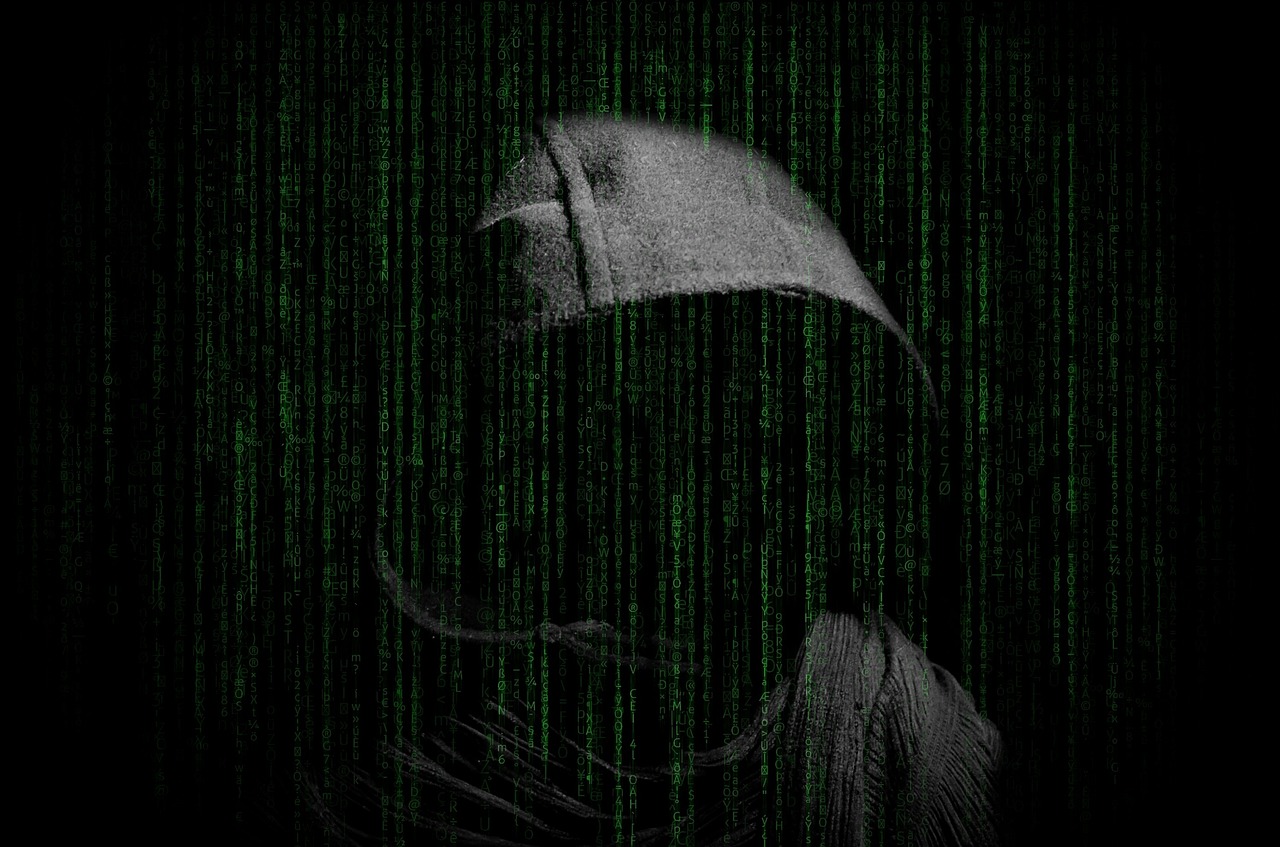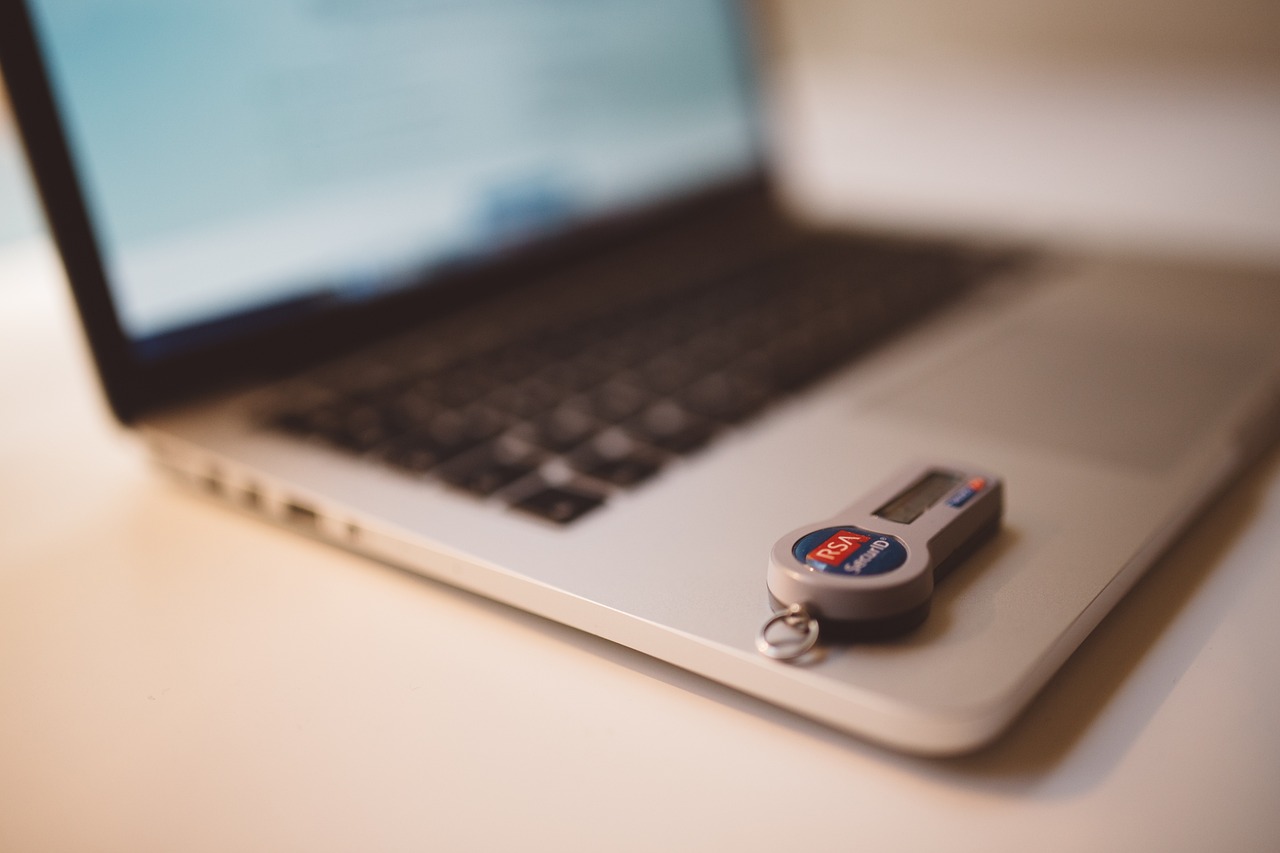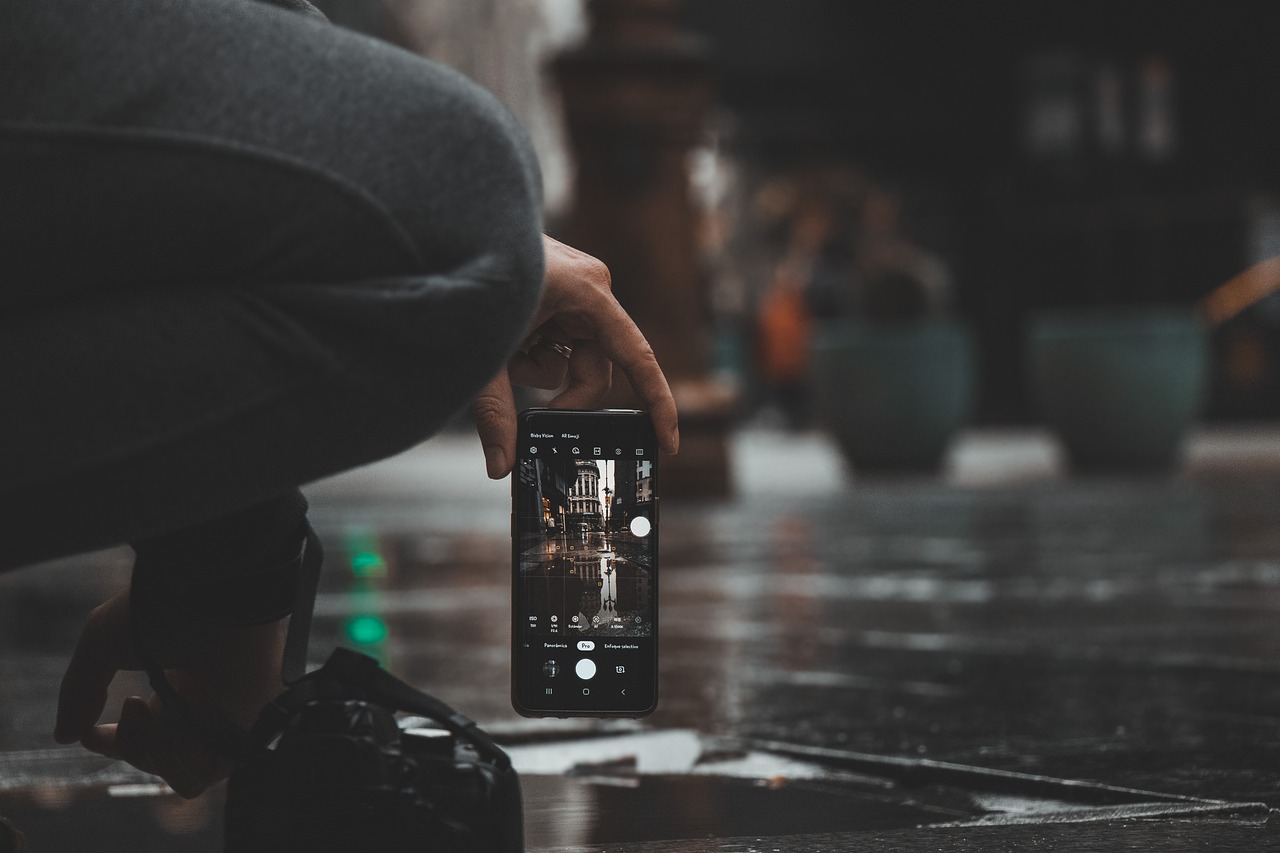Personal Security in a World of Spyware
In today's digital age, where our lives are increasingly intertwined with technology, the concept of personal security has taken on a new meaning. With the rise of spyware, a type of malicious software designed to gather personal information without your consent, protecting your privacy has never been more crucial. Imagine walking through a crowded marketplace, feeling secure and anonymous, only to discover that someone has been silently tracking your every move. That’s what spyware does—it lurks in the shadows, collecting data while you go about your daily activities, often without you even realizing it.
As we dive deeper into the world of spyware, it's essential to understand not only how it operates but also the various forms it can take. From keyloggers that capture your keystrokes to adware that bombards you with unwanted ads, the threats are diverse and constantly evolving. This article aims to equip you with the knowledge and tools necessary to navigate this treacherous landscape, ensuring that your personal information remains just that—personal.
So, how do you safeguard your digital life against these invisible intruders? It starts with awareness. By understanding the common sources of spyware and recognizing the signs of infection, you can take proactive steps to protect yourself. Throughout this article, we will explore practical strategies to enhance your personal security and maintain your privacy in a world that often feels like it's under constant surveillance.
As we embark on this journey to bolster your defenses against spyware, remember that knowledge is power. With the right information and tools at your disposal, you can reclaim your privacy and navigate the internet with confidence. Let’s get started!
Spyware is not just a buzzword; it represents a real and growing threat to individuals and organizations alike. This type of malicious software is designed with one primary goal: to collect user information without their knowledge or consent. Think of it as a digital peeping Tom, silently watching and recording your every action online. Spyware can track your browsing habits, capture passwords, and even steal sensitive financial information.
There are several types of spyware, each with its unique characteristics. For instance, keyloggers record every keystroke you make, while tracking cookies follow your online behavior to create targeted advertisements. Understanding these distinctions is crucial in recognizing how spyware can infiltrate your devices and compromise your personal security.
Identifying where spyware typically originates is crucial for prevention. Many individuals unknowingly invite spyware into their lives through seemingly harmless actions. For instance, downloading free software or clicking on enticing email attachments can lead to serious security breaches. Here are some common sources where spyware often lurks:
- Downloads: Free software, especially from unverified sources, can be a breeding ground for spyware.
- Email Attachments: Phishing emails may contain malicious attachments that install spyware.
- Malicious Websites: Some websites are designed to exploit vulnerabilities in your browser, leading to spyware infections.
It’s essential to recognize that even legitimate software applications can harbor spyware. Often, users download infected programs without a second thought, believing they are safe. To avoid this pitfall, always check user reviews and download software from trusted sources. If a program seems too good to be true, it probably is. Be vigilant and conduct thorough research before installing any application on your device.
Peer-to-peer (P2P) file sharing can also expose users to spyware risks. While it may seem like a convenient way to share files, downloading from unverified sources can lead to serious security threats. Always be cautious about the files you download and consider using a reputable P2P service that prioritizes user safety.
In our mobile-centric world, it's important to remember that mobile applications can also be vectors for spyware. Many users download apps without considering their source. To mitigate this risk, always download apps from official app stores and check the permissions they request. If an app asks for access to data it doesn’t need, think twice before downloading.
Recognizing the signs of spyware infection is vital for timely intervention. Some common symptoms that indicate your device may be compromised include:
- Slow performance or frequent crashes.
- Unexplained data usage or unusual activity on your accounts.
- Pop-ups or ads that appear even when you’re not browsing.
Prevention is the best defense against spyware. Here are some actionable steps you can take to safeguard your devices and personal information:
Investing in reputable antivirus software can effectively detect and remove spyware. When choosing an antivirus solution, look for features like real-time protection and regular updates. Configuring it correctly is also crucial for optimal protection. Schedule regular scans and ensure that your software is always up to date to defend against the latest threats.
Adopting safe browsing habits is essential for avoiding spyware. Here are some tips to help you navigate the internet securely:
- Always use a secure connection (look for HTTPS in the URL).
- Avoid clicking on suspicious links or ads.
- Regularly clear your browser's cache and cookies.
What is spyware? Spyware is malicious software that collects user information without their consent, often used for identity theft or unauthorized access to personal data.
How can I tell if my device is infected with spyware? Signs include slow performance, unexpected pop-ups, and unusual data usage. If you notice these symptoms, conduct a thorough scan with antivirus software.
What can I do to prevent spyware infections? Use reputable antivirus software, avoid downloading from untrusted sources, and practice safe browsing habits to minimize the risk of spyware infections.

Understanding Spyware
This article explores the increasing threats posed by spyware and offers practical advice on how individuals can protect their personal information and maintain their privacy in a digital age.
Spyware is a type of malicious software designed to collect user information without their knowledge. It operates stealthily, often hiding in the background while it gathers sensitive data such as passwords, credit card numbers, and browsing habits. Imagine a sneaky little spy that infiltrates your digital life, taking notes on everything you do without you even realizing it. This is precisely how spyware functions, making it a significant threat in today’s interconnected world.
There are several different types of spyware, each with its unique methods of operation. Some common categories include:
- Adware: This type bombards you with unwanted advertisements, often tracking your browsing history to tailor ads to your interests.
- Keyloggers: These programs record every keystroke you make, potentially capturing sensitive information like passwords and personal messages.
- Trojans: Named after the infamous Greek myth, these programs disguise themselves as legitimate software but carry harmful payloads.
- Tracking Cookies: While not as harmful as other types, these cookies can still collect data about your online activities and preferences.
Spyware often infiltrates devices through various means, including software downloads, email attachments, and even malicious websites. Once installed, it can be incredibly difficult to detect and remove, making awareness and prevention crucial. The best defense is understanding how spyware operates, so you can recognize the signs and take action before it causes significant damage.
In essence, spyware is like a digital shadow, lurking behind your online activities and collecting information without your consent. This makes it essential for everyone to stay informed about its tactics and be proactive in protecting their personal data. By understanding the nature of spyware, you can better equip yourself to defend against it and maintain your privacy in an increasingly digital world.
Identifying where spyware typically originates is crucial for prevention. This section discusses common sources, including downloads, email attachments, and malicious websites that can compromise your personal security.
Many legitimate software applications can harbor spyware. Here, we examine how to identify and avoid infected programs that may jeopardize your security and privacy.
Peer-to-peer file sharing can expose users to spyware risks. This subsection highlights the dangers associated with downloading files from unverified sources and how to mitigate those risks.
Mobile applications can also be a vector for spyware. This part discusses how to recognize potentially harmful apps and the importance of downloading from trusted sources.
Recognizing the signs of spyware infection is vital for timely intervention. This section outlines common symptoms that indicate your device may be compromised and requires immediate attention.
Prevention is the best defense against spyware. Here, we provide actionable steps individuals can take to safeguard their devices and personal information from being targeted.
Antivirus software can effectively detect and remove spyware. This subsection explains how to choose the right antivirus solution and configure it for optimal protection.
Adopting safe browsing habits is essential for avoiding spyware. This section offers tips on how to navigate the internet securely and avoid potential threats while online.
Q: What is spyware?
A: Spyware is malicious software that secretly collects user information without their consent. It can track activities, capture keystrokes, and gather sensitive data.
Q: How can I tell if my device has spyware?
A: Signs of spyware infection include slow performance, unexpected pop-ups, and unfamiliar programs or applications. If you notice these symptoms, it’s essential to scan your device with antivirus software.
Q: Can spyware be removed?
A: Yes, spyware can typically be removed using antivirus or anti-spyware software. Regular scans and updates are crucial for maintaining device security.
Q: How can I prevent spyware from infecting my devices?
A: To prevent spyware, use reliable antivirus software, avoid downloading from untrusted sources, and practice safe browsing habits.

Common Sources of Spyware
In today's digital landscape, understanding where spyware lurks is crucial for protecting your personal information. Spyware can infiltrate your devices through various channels, often disguised as legitimate software or hidden within seemingly harmless files. By identifying these common sources, you can take proactive steps to safeguard your privacy.
One of the primary sources of spyware is downloads from the internet. When you download software, especially from third-party websites, you may inadvertently install spyware along with the desired application. This is particularly true for free software, which may come bundled with unwanted programs. Always opt for downloads from reputable sites, and consider reading user reviews to gauge the software's trustworthiness.
Another significant source is email attachments. Cybercriminals often use phishing emails to trick users into opening attachments that contain spyware. These emails may look legitimate, appearing to be from trusted contacts or organizations. To protect yourself, always verify the sender's email address and avoid opening attachments from unknown sources. Remember, if it looks suspicious, it probably is!
Additionally, malicious websites can serve as breeding grounds for spyware. These sites may host downloads that look appealing but are designed to infect your device with malware. They often employ social engineering tactics to lure you in, such as flashy ads or enticing offers. To steer clear of these traps, use a reliable search engine and avoid clicking on dubious links. It's also wise to install a web filter that can block harmful sites before you even have a chance to visit them.
Furthermore, be cautious when using peer-to-peer (P2P) sharing platforms. While these platforms can be great for sharing files, they can also expose you to significant risks. Downloading files from unverified sources can lead to spyware infections, as many users upload files without scanning them for malware. Always use trusted P2P networks and consider scanning any downloaded files with antivirus software before opening them.
Lastly, mobile applications are another common source of spyware. With the rise of smartphones, malicious apps have become increasingly prevalent. Many users unknowingly download harmful applications that can track their activities or steal personal information. To mitigate this risk, always download apps from official app stores and pay attention to the permissions requested by each app. If an app asks for unnecessary permissions, it’s a red flag!
By being aware of these common sources of spyware, you can significantly reduce your risk of infection. Remember, staying informed and vigilant is your best defense in this digital age!
- What is spyware? - Spyware is a type of malicious software designed to collect user information without their knowledge.
- How can I tell if my device is infected with spyware? - Common signs include slow performance, unexpected pop-ups, and unfamiliar applications.
- Can antivirus software detect spyware? - Yes, most modern antivirus solutions can detect and remove spyware.
- What should I do if I suspect spyware on my device? - Run a full antivirus scan and remove any detected threats immediately.

Infected Software and Applications
When we think about spyware, we often imagine shady websites or sketchy emails, but did you know that even legitimate software can harbor these sneaky little programs? That's right! Infected software and applications can be a significant source of spyware, and understanding how this happens is crucial for protecting your personal security. Often, these programs come bundled with other software, especially free downloads. You might be downloading a free game or a helpful utility, but without realizing it, you could also be inviting spyware onto your device.
So, how does this happen? Many developers, especially those offering free software, might partner with third-party companies to include additional features or advertising tools. While this can sometimes be harmless, it can also lead to the installation of spyware. Always read the fine print during installation! Look for options that allow you to opt-out of additional software installations. If you see a checkbox for "Install additional software," make sure it’s unchecked before proceeding. Think of it as a party crasher; just because they’re invited doesn’t mean you want them in your home!
Another common scenario is when users download software from unofficial sources. These sites may not have the same security measures as reputable platforms, making them a hotbed for malicious software. To help you navigate this tricky landscape, here are a few tips to identify and avoid infected programs:
- Stick to Official Sources: Always download software from the developer's official website or trusted platforms like the App Store or Google Play.
- Check Reviews: Look for user reviews and ratings before downloading. If a program has a lot of complaints about spyware or malware, steer clear!
- Use Security Tools: Consider using tools that scan downloads for malware before you install them. A little precaution can go a long way!
It's also essential to keep your software up to date. Developers frequently release patches and updates to fix vulnerabilities that could be exploited by spyware. By keeping your applications current, you not only benefit from the latest features but also enhance your security. Think of it as putting up stronger locks on your doors; it’s a simple but effective way to keep unwanted guests out!
In conclusion, while the allure of free software can be tempting, it’s vital to remain vigilant. By being proactive in your software choices and installation practices, you can significantly reduce the risk of exposing your device to spyware. Always remember, in the digital world, an ounce of prevention is worth a pound of cure!
Q: How can I tell if my software is infected with spyware?
A: Look for unusual behavior such as slow performance, unexpected pop-ups, or unfamiliar programs appearing on your device. Running a complete antivirus scan can also help identify any malicious software.
Q: Is it safe to use free software?
A: While many free programs are legitimate, they can sometimes come bundled with spyware. Always download from reputable sources and read user reviews to minimize risk.
Q: What should I do if I suspect spyware on my device?
A: Immediately run a full scan with a reputable antivirus program. If spyware is detected, follow the program's instructions to remove it. Additionally, consider changing your passwords and monitoring your accounts for suspicious activity.

Peer-to-Peer Sharing Risks
When it comes to sharing files online, peer-to-peer (P2P) networks can seem like a treasure trove of content just waiting to be discovered. But hold your horses! While the allure of free music, movies, and software is tempting, the risks associated with P2P sharing can be significant. Imagine walking into a party where everyone is sharing secrets, but some of those secrets could be harmful. That's what using P2P networks can feel like—exciting yet perilous.
One of the biggest dangers of P2P sharing is the potential for downloading infected files. Unlike traditional downloads from reputable websites, P2P networks often lack the same level of scrutiny. You might think you’re downloading that new blockbuster movie, but what you actually get could be a malware-laden file designed to compromise your device. In fact, a study found that nearly 60% of files shared on P2P networks contained some form of malicious software. So, how do you protect yourself in this digital jungle?
To stay safe while using P2P platforms, consider the following precautions:
- Verify Sources: Always check the credibility of the uploader. If you see a file with no reviews or an unknown user, think twice before downloading.
- Use Antivirus Software: Make sure you have robust antivirus protection that scans files before they're opened. It's like having a security guard at the door of that party.
- Limit Sharing: If you’re sharing files, be cautious about what you upload. You never know who might be downloading your files and what they might contain.
Moreover, many P2P applications can expose your IP address, potentially opening the door for hackers to target you directly. Think of your IP address as your home address in the digital world; you wouldn’t want just anyone knowing where you live, right? To add another layer of protection, consider using a Virtual Private Network (VPN) while engaging in P2P sharing. A VPN masks your IP address, making it harder for prying eyes to track your online activities.
In summary, while peer-to-peer sharing can offer a wealth of content, it’s essential to navigate this space with caution. By verifying sources, using antivirus software, limiting what you share, and considering a VPN, you can significantly reduce the risks associated with P2P networks. Remember, in the world of digital sharing, it’s better to be safe than sorry!
Q1: What is peer-to-peer sharing?
A1: Peer-to-peer sharing allows users to share files directly with one another without the need for a centralized server. This method can be used for sharing various types of content, but it also comes with risks.
Q2: How can I tell if a file is safe to download?
A2: Look for user reviews, check the uploader's credibility, and ensure your antivirus software is active to scan files before opening them.
Q3: Is using a VPN necessary for P2P sharing?
A3: While not mandatory, using a VPN can provide an extra layer of security by masking your IP address, making it harder for hackers to target you.
Q4: What should I do if I suspect my device has spyware?
A4: Run a full scan using your antivirus software immediately, disconnect from the internet, and consider seeking professional help if the issue persists.

Mobile Apps and Spyware
In today's fast-paced digital world, mobile applications have become an integral part of our daily lives. From social media to banking, we rely on these apps for convenience and connectivity. However, lurking behind the user-friendly interfaces are potential threats, including spyware. This type of malicious software can infiltrate your device through seemingly innocent apps, collecting sensitive information without your consent. So, how can you spot a potentially harmful app before it wreaks havoc on your privacy?
First and foremost, it’s crucial to download apps only from trusted sources. The official app stores, like the Apple App Store and Google Play Store, have security measures in place to vet applications. Still, even these platforms are not immune to the occasional rogue app slipping through the cracks. Always check the app's ratings and reviews before hitting that download button. A quick glance at user feedback can often reveal red flags, such as reports of unusual permissions or suspicious behavior.
Moreover, pay attention to the permissions that an app requests during installation. If a simple game asks for access to your contacts, camera, and location, it’s a cause for concern. Here’s a quick guide to help you understand what permissions are reasonable:
| Permission Type | Reasonable Use | Red Flag |
|---|---|---|
| Camera Access | Photo or video applications | Games or unrelated apps |
| Location Access | Navigation or weather apps | Random games or utilities |
| Contacts Access | Messaging or social media apps | Apps that don’t require social interaction |
Additionally, be wary of apps that promise unrealistic features or benefits. If it sounds too good to be true, it probably is! For instance, apps that claim to enhance your phone's performance or provide free premium services may be disguising spyware under the guise of functionality. Always do your research, and if an app seems to be a scam, it’s best to steer clear.
Finally, keep your device’s operating system and applications updated. Developers often release updates to patch security vulnerabilities that could be exploited by spyware. By ensuring your mobile device is running the latest software, you significantly reduce the risk of falling victim to malicious attacks.
In summary, while mobile apps can enhance our lives, they also carry inherent risks. By being vigilant about where you download your apps from, scrutinizing permissions, and staying updated, you can protect your personal information from the clutches of spyware. Remember, your privacy is your responsibility, and taking these precautions can help you enjoy the benefits of technology without compromising your security.

Signs of Spyware Infection
In today's digital landscape, where our lives are intertwined with technology, recognizing the signs of spyware infection is crucial for maintaining our privacy and security. Imagine your device as a personal vault, and spyware as an unwanted intruder trying to sneak in and steal your valuables. The sooner you identify the signs of this digital trespasser, the better you can protect yourself. So, what should you be on the lookout for?
One of the most common indicators of spyware infection is a noticeable slowdown in your device's performance. If your smartphone or computer suddenly feels like it’s trudging through molasses, it could be a sign that malicious software is running in the background, consuming resources. Additionally, frequent crashes or unexpected restarts might suggest that something is amiss. Think of it as your device's way of signaling that it’s overwhelmed and needs your attention.
Another red flag is the appearance of unfamiliar pop-up ads. While ads are a common part of the internet experience, if you start seeing ads that are irrelevant or excessive, it might indicate that spyware is at play. These ads can be particularly invasive and annoying, often appearing even when you’re not browsing the web. It's like having an uninvited guest who just won't leave your living room!
Furthermore, if your web browser is suddenly redirecting you to unfamiliar websites or displaying altered search results, this could be a sign of browser hijacking, a tactic often used by spyware. This can feel like being led down a dark alley when you were just trying to find your way home. Always be cautious if your usual online routes seem to have changed overnight.
Another crucial sign to watch for is unusual behavior in your applications. If programs are crashing unexpectedly or you notice new software that you didn’t install, it’s time to take action. This can feel like finding a stranger in your house—definitely not a situation you want to ignore!
Lastly, if you find that your device is sending out texts or emails that you didn't compose, or if you notice unfamiliar accounts or changes in your settings, this is a significant warning sign. It's as if someone else has taken the wheel of your vehicle while you were distracted. To help you keep track of these signs, here’s a quick summary:
- Device slowdown: Noticeable lag in performance.
- Excessive pop-up ads: Unwanted advertisements appearing frequently.
- Browser redirection: Unexpected changes in your web browsing experience.
- Unusual application behavior: Programs crashing or new software appearing.
- Unauthorized messages: Sending texts or emails you didn't write.
Recognizing these signs is the first step toward reclaiming your digital safety. If you suspect that spyware has infiltrated your device, it’s essential to act swiftly. The longer you wait, the more data you risk losing. So, keep your eyes peeled and your defenses up—your digital life depends on it!
Q: What should I do if I suspect spyware on my device?
A: If you suspect spyware, the first step is to disconnect from the internet to prevent further data transmission. Then, run a full scan with a reputable antivirus program to detect and remove any malicious software.
Q: Can spyware be removed easily?
A: Many antivirus solutions can effectively remove spyware, but the process may vary depending on the type and severity of the infection. Always ensure your antivirus software is up to date for the best results.
Q: How can I prevent spyware from infecting my device?
A: To prevent spyware, practice safe browsing habits, avoid downloading applications from untrusted sources, and regularly update your software and antivirus programs.

Preventive Measures
In a world where digital threats loom large, taking preventive measures against spyware is not just wise—it's essential. Think of your personal information as a treasure chest; you wouldn’t leave it unlocked for anyone to rummage through, would you? The same principle applies to your digital life. By implementing a series of proactive strategies, you can fortify your defenses and ensure that your sensitive data remains safe from prying eyes.
First and foremost, investing in antivirus software is a crucial step in your cybersecurity arsenal. But not just any antivirus will do! You need a solution that is robust, regularly updated, and capable of detecting the latest threats. When choosing antivirus software, consider the following factors:
| Feature | Importance |
|---|---|
| Real-time scanning | Detects threats as they occur |
| Regular updates | Ensures protection against new spyware |
| User-friendly interface | Makes it easy to manage security settings |
| Customer support | Helps resolve issues quickly |
Once you have your antivirus set up, it’s equally important to adopt safe browsing practices. The internet is like a vast ocean filled with both treasures and dangers. To navigate it safely, always be cautious about the websites you visit. Here are a few tips to keep in mind:
- Only download from trusted sources: Stick to official websites or reputable app stores. Avoid downloading files from unknown sites, as they may harbor spyware.
- Check for HTTPS: Before entering any personal information, ensure the website uses HTTPS, indicating a secure connection.
- Be wary of pop-ups: Many spyware infections start with deceptive pop-ups that encourage you to download malicious software.
Moreover, you should regularly update your software and operating systems. Software developers frequently release updates that patch vulnerabilities, making it harder for spyware to infiltrate your devices. Think of it like reinforcing the locks on your doors—every update is another layer of security added to your home.
Another often-overlooked area is the security of your mobile applications. Just as you would be cautious about the apps you install on your phone, you should be equally vigilant about their permissions. Always check what data an app is requesting access to. If it seems excessive for the app's purpose, it might be a red flag. Downloading apps from trusted sources, like the Apple App Store or Google Play, can significantly reduce your risk of spyware infection.
Lastly, consider using a VPN (Virtual Private Network) when browsing the internet. A VPN encrypts your internet connection, making it more difficult for cybercriminals to intercept your data. This is especially important when using public Wi-Fi networks, which are notorious for being breeding grounds for spyware and other malicious activities. By employing these preventive measures, you can create a virtual fortress around your personal information.
Q: What is spyware, and how does it work?
A: Spyware is malicious software that secretly monitors your activities and collects personal information without your consent. It often operates in the background, making it difficult to detect.
Q: How can I tell if my device is infected with spyware?
A: Common signs include slow device performance, unexpected pop-ups, and unfamiliar applications appearing on your device. If you notice any of these symptoms, it's time to take action!
Q: Is free antivirus software effective against spyware?
A: While some free antivirus programs offer basic protection, they may lack the advanced features and regular updates needed to combat the latest spyware threats. Investing in a reputable paid solution is often worth it.
Q: Can I remove spyware myself?
A: Yes, many antivirus programs can help you detect and remove spyware. However, if you're unsure, it's best to consult a professional to ensure your device is thoroughly cleaned.

Using Antivirus Software
When it comes to defending your digital realm, antivirus software is your first line of defense against spyware and other malicious threats. Think of it as your personal bodyguard in the vast, chaotic world of the internet. Just like you wouldn’t wander into a dark alley without a buddy, you shouldn’t surf the web without robust antivirus protection. But how do you choose the right one, and what features should you look for?
First off, not all antivirus software is created equal. It’s essential to do your homework and pick a solution that suits your specific needs. Some antivirus programs focus primarily on detecting known threats, while others use advanced algorithms to predict and block new, emerging threats. Here are a few key features to consider when selecting antivirus software:
- Real-Time Protection: This feature continuously scans for threats as you browse the internet, ensuring that you’re shielded from spyware before it can infiltrate your system.
- Regular Updates: The digital landscape is always changing, which means your antivirus needs to adapt. Look for software that offers automatic updates to its virus definitions.
- Comprehensive Scanning: A good antivirus solution should provide options for quick scans, full system scans, and even specific file scans.
- User-Friendly Interface: If the software is too complicated to use, you might not utilize it effectively. Choose something that’s intuitive and easy to navigate.
Once you’ve selected your antivirus software, configuring it correctly is just as important as choosing the right one. Make sure you enable all the essential settings, including real-time protection and automatic updates. Some programs also allow you to schedule regular scans, which is a fantastic way to ensure your system stays clean without needing constant manual oversight.
But what happens if your antivirus software detects a threat? It’s crucial to respond promptly. Most antivirus programs will either quarantine the suspicious file or offer you options to delete it. Always follow through with these recommendations; ignoring them is like ignoring a fire alarm going off in your house!
In addition to using antivirus software, consider complementing your digital security with other tools. For instance, a good firewall can provide an extra layer of protection by controlling incoming and outgoing network traffic. Together, antivirus software and a firewall create a formidable barrier against spyware and other cyber threats.
Lastly, remember that no antivirus solution is foolproof. While they are incredibly effective at detecting and removing threats, staying informed about the latest cybersecurity trends and practicing safe browsing habits are equally important. The internet can be a wild west of sorts, but with the right tools and knowledge, you can navigate it safely.
Q: How often should I update my antivirus software?
A: It's best to enable automatic updates, so your antivirus software stays current with the latest virus definitions and security patches.
Q: Can I use multiple antivirus programs at once?
A: It’s generally not recommended to run multiple antivirus programs simultaneously, as they can conflict with each other and reduce overall system performance.
Q: What should I do if my antivirus software detects spyware?
A: Follow the software's recommendations, whether that means quarantining or deleting the detected spyware. Always ensure to run a full system scan afterward.
Q: Is free antivirus software effective?
A: While free antivirus software can provide basic protection, it often lacks advanced features found in paid versions. Consider your needs and whether investing in a robust solution is worth it.

Safe Browsing Practices
In today's digital landscape, practicing safe browsing habits is more important than ever. With the internet being a vast ocean of information, it’s easy to get lost and inadvertently expose yourself to spyware and other malicious threats. So, how can you navigate these waters safely? Think of your online presence as a delicate garden—you wouldn’t want weeds (or spyware) to creep in and ruin it, right? Here are some essential strategies to cultivate a safer browsing experience.
First and foremost, always ensure that your web browser is up to date. Just like you wouldn't drive a car with outdated safety features, browsing the web with an outdated browser can leave you vulnerable to security flaws. Most modern browsers offer automatic updates, so take advantage of this feature to keep your digital garden flourishing.
Another crucial aspect of safe browsing is being cautious with links. If a link seems suspicious or too good to be true, it probably is. Hover over links before clicking to see where they lead. If the URL looks odd or contains strange characters, it’s best to steer clear. Remember, even legitimate-looking emails can contain phishing links—so keep your guard up!
When it comes to downloads, always opt for official websites or trusted sources. Downloading software or files from unknown sites is like picking fruit from a garden you’ve never seen before—it could be delicious, or it could be rotten. If you’re unsure, do a quick search for reviews or feedback about the site or software before proceeding.
Utilizing a virtual private network (VPN) can also enhance your online security. A VPN encrypts your internet connection, making it harder for prying eyes to see what you’re doing online. Think of it as putting up a tall fence around your garden—it keeps out unwanted visitors and protects your privacy. This is especially important when using public Wi-Fi networks, which are often breeding grounds for cyber threats.
Lastly, consider using browser extensions that enhance your security. Tools like ad blockers or script blockers can help prevent malicious ads and scripts from loading on your browser. Just like a good gardener uses mulch to keep weeds at bay, these extensions can help keep your browsing experience clean and safe.
In summary, by adopting these safe browsing practices, you can significantly reduce your risk of encountering spyware and other online threats. Remember, the internet is a powerful tool, but like any tool, it requires responsible handling. With a little vigilance and the right strategies, you can enjoy the online world while keeping your personal information secure.
- What is spyware? Spyware is a type of malicious software designed to collect user information without their knowledge.
- How can I tell if my device has spyware? Common signs include slow performance, unexpected pop-ups, and unfamiliar applications.
- Is antivirus software enough to protect me from spyware? While antivirus software is essential, safe browsing practices are equally important to ensure comprehensive protection.
- Can I use free antivirus software? Yes, but ensure it comes from a reputable source and offers adequate protection features.
Frequently Asked Questions
- What is spyware and how does it work?
Spyware is a type of malicious software that secretly monitors your activities and collects personal information without your consent. It can track your online behavior, capture keystrokes, and even access sensitive data like passwords and credit card numbers. Essentially, it's like having a hidden camera in your digital life, watching everything you do!
- How can I tell if my device is infected with spyware?
There are several signs that may indicate spyware infection, such as unexpected pop-ups, slow performance, or unusual behavior from your applications. If your device frequently crashes or you notice unfamiliar programs running in the background, it's time to investigate further. Think of it like your car making strange noises; it’s a clear signal that something’s not right!
- What are the best ways to prevent spyware infections?
To keep spyware at bay, it's crucial to adopt safe browsing habits, avoid downloading suspicious files, and always use trusted sources for software. Additionally, installing reliable antivirus software can help detect and eliminate spyware before it can do any damage. Just like locking your doors at night, these precautions can go a long way in protecting your personal space online.
- Can antivirus software remove spyware?
Absolutely! Most modern antivirus programs are designed to detect and remove spyware effectively. However, it’s essential to choose a reputable antivirus solution and ensure it’s updated regularly. Think of antivirus software as your digital bodyguard, always on the lookout for threats and ready to step in when danger lurks.
- Are mobile apps safe from spyware?
Not always! While many mobile apps are safe, some can harbor spyware, especially if downloaded from unverified sources. Always check app reviews and permissions before downloading. Consider it like choosing a restaurant; you wouldn’t want to eat somewhere with bad reviews or unsanitary conditions!
- What should I do if I suspect spyware on my device?
If you suspect spyware, the first step is to run a full scan with your antivirus software. If the problem persists, consider resetting your device to factory settings. It’s like hitting the reset button on your life; sometimes a fresh start is the best way to clear out unwanted guests!



















